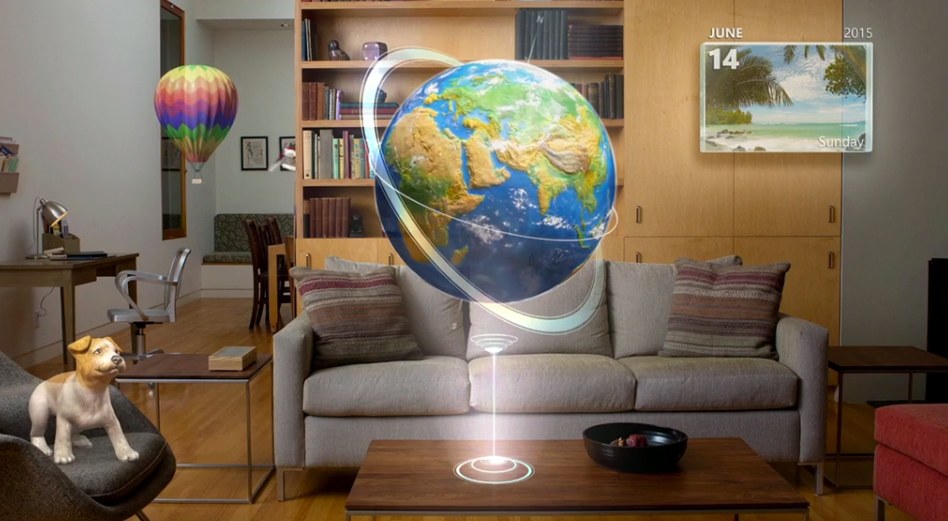Augmented Reality (AR)
Augmented reality is the technology that converts our physical world by adding layers of digital information onto it. Unlike Virtual Reality (VR), AR does not create the whole artificial environment to replace real with virtual one.
AR adds sounds, videos, and graphics to the existing environment. And this is the reason why AR is more likely to be used regularly in day-to-day life. It is more comfortable using AR in a public place or in a living room.
Understanding more, Augmented Reality is any sort of computer-based system that gathers all the information and overlays data on top of your current view, while letting you see the world around you.
IKEA forwarded one of the best examples of AR for users. Setting up competition in the market it created many outstanding solutions. It has developed a table as part of its concept kitchen that suggests recipes based on the ingredients on the table, which is a great example of AR working in the real world, potentially.
Virtual Reality (VR)
Virtual Reality (VR) can convince the human brain that what it is experiencing is real which is really not. It literally makes it possible to experience the virtual world anytime anything and anywhere.
It is the most immersive type of reality technology that has ever been created. Head-mounted displays are used with headphones and hand controllers to provide a fully immersive experience.
In today’s advanced world VR is grabbing the attention of the crowd. It is found within headsets like the Oculus Rift, HTC Vive, PlayStation VR, Gear VR, and Google Cardboard which have virtual screens. The virtual screen has a stereoscopic view which the eye adjusts to see as a 3D image.
The headset aims to track where you are looking and reflect accordingly to those movements in the virtual display. VR aims to make you feel completely immersed in another world and blocks everything else out. Interaction is also possible with controllers of various types.
The largest technology companies on planet Earth like Apple, Google, and Microsoft are currently investing billions of dollars into virtual reality companies and startups. The future of virtual reality is set to be a pillar of our everyday lives.
Mixed Reality
Mixed Reality that is sometimes called Hybrid Reality. MR aims to blend aspects of both virtual reality and augmented reality. Talking about MR it refers to the entire spectrum of situations that span the continuum between virtual reality and actual reality.
In simple language, mixed reality includes augmented reality, augmented virtuality, and other mixed configurations. To experience the unreal world more technology is pulling it hard forecasting the users. In mixed reality environments, users seamlessly navigate through both the real and virtual environments.
When both real and virtual worlds are combined, new environments and visualizations take birth. In that case, physical and digital objects can coexist and interact in real-time. Mixed reality, either as a standalone concept refers to the entire spectrum of situations between the real world and virtual reality. It attempts to combine the best of both virtual reality and augmented reality.
We hope the above information about The difference between Virtual Reality, Augmented Reality, and Mixed Reality proves useful to you. Please feel free to share your feedback or queries in the comments section below



